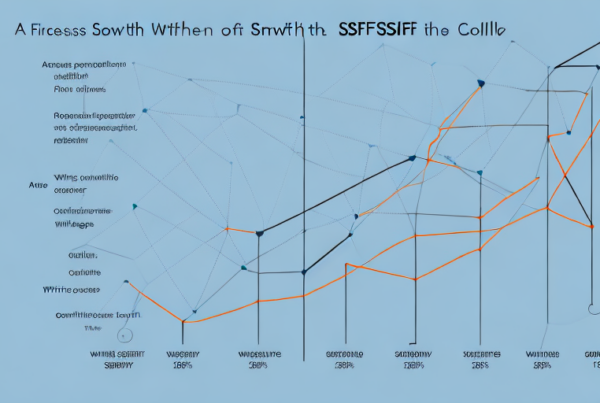Self-managed super funds, or SMSFs, have become increasingly popular over the years. They allow individuals to have more control over their retirement savings and investments. However, managing an SMSF can be complex and time-consuming, particularly in light of the ever-changing regulatory landscape. In this article, we’ll outline some common mistakes to avoid in SMSF management in 2023, so you can make the most of your retirement savings while avoiding costly pitfalls.
Understanding SMSF Management in 2023
Before diving into the common SMSF management mistakes, it’s important to have a solid understanding of the basics of SMSF management. SMSFs are regulated by the Australian Taxation Office (ATO) and must comply with their guidelines. Key responsibilities of an SMSF trustee include developing an investment strategy, monitoring and recording investments, managing cash flow, and ensuring compliance with all regulatory requirements.
When it comes to managing an SMSF, it’s important to have a clear understanding of the investment strategy that will be used. This strategy should be tailored to meet the specific needs and goals of the fund’s members. It’s important to regularly review the investment strategy to ensure that it remains appropriate and effective.
One of the key benefits of SMSFs is the ability to invest in a wide range of assets, including property. However, it’s important to remember that there are strict rules around what assets an SMSF can invest in. For example, an SMSF cannot invest in assets that are used by a member or related party, such as a holiday home.
Changes in SMSF Regulations and Requirements
The ATO frequently updates SMSF regulations and requirements, so it’s important to stay up-to-date to avoid any penalties or fines. For example, in 2022, new reporting obligations were introduced, including the requirement to report events such as the death of a member within 28 days. Keep in mind that regulatory changes may impact your investment strategy, so it’s important to stay informed.
In addition to regulatory changes, it’s important to stay up-to-date with changes in the broader investment landscape. For example, changes in interest rates, inflation, and the global economy can all have an impact on the performance of an SMSF. Regularly reviewing and adjusting the investment strategy can help to ensure that the fund remains on track to meet its goals.
The Importance of Staying Updated
Given the dynamic regulatory environment, it’s critical to stay up-to-date with SMSF management best practices. Attend seminars, webinars, or workshops and keep abreast of industry news to stay informed of all the latest regulations and changes to SMSF management. Also, consider joining a professional association for SMSF trustees.
It’s also important to seek professional advice when needed. An SMSF can be a complex and challenging investment vehicle to manage, so it’s important to have access to expert advice when making important decisions. This can include seeking advice from financial advisors, accountants, and lawyers.
In conclusion, managing an SMSF can be a rewarding experience, but it’s important to have a solid understanding of the basics of SMSF management and to stay up-to-date with the latest regulations and best practices. By doing so, SMSF trustees can help to ensure that their fund remains compliant and on track to meet its goals.
Inadequate Investment Strategy
To achieve your retirement goals, you need a well-structured investment plan that aligns with your investment objectives. However, some trustees fall into the trap of inadequate investment strategy, which can ultimately lead to poor performance and financial losses.
When it comes to investing, it’s important to remember that there is no one-size-fits-all approach. Your investment strategy should be tailored to your specific needs and goals. This means taking into account factors such as your age, income, and risk tolerance.
Diversification and Risk Management
Diversification is key to managing risk and achieving consistent returns. SMSFs should have a diversified portfolio that includes a mix of assets, including equities, property, and cash. By spreading your investments across different asset classes, you can reduce the impact of any one investment underperforming.
It’s also important to consider the level of risk you are comfortable with. Some SMSFs may be more risk-averse than others, depending on the age and financial situation of the members. For example, if the SMSF has members in their 50s or 60s who are nearing retirement, the investment strategy should be more conservative to minimize risk.
Regularly Reviewing and Updating Your Strategy
Your SMSF’s investment strategy should be reviewed regularly to ensure it remains aligned with your goals and risk tolerance. As market conditions and personal circumstances change, your investment strategy may need adjusting. Review it at least annually, to ensure you remain on track.
When reviewing your investment strategy, it’s important to take a holistic view of your SMSF’s financial situation. This includes considering factors such as cash flow, debt, and tax implications. By taking a comprehensive approach to investment planning, you can ensure that your SMSF is well-positioned to achieve your long-term financial goals.
Ultimately, a well-structured investment strategy is critical to the success of your SMSF. By diversifying your portfolio, managing risk, and regularly reviewing and updating your strategy, you can maximize your returns and achieve your retirement goals.
Non-Compliance with Regulatory Requirements
Failing to comply with ATO guidelines can result in penalties and fees, so it’s critical to ensure your SMSF remains in compliance. However, it’s important to understand why these guidelines are in place in the first place.
The ATO has implemented these guidelines to protect the interests of SMSF members and ensure that they receive the retirement benefits they are entitled to. Compliance with these guidelines also helps to maintain the integrity of the superannuation system and protect the broader Australian economy.
Reporting and Record-Keeping Mistakes
The ATO requires accurate and timely reporting, including the lodgement of an SMSF annual return and financial statements. This reporting is essential for ensuring that your SMSF remains compliant and that you avoid any penalties.
Some common reporting mistakes include failing to report accurate asset valuations, failing to confirm member details and events, and failing to keep adequate records. Neglecting your reporting responsibilities risks hefty penalties, which can significantly impact your retirement savings.
It’s important to note that accurate and timely reporting is not just a requirement of the ATO, but it also provides you with valuable insights into the performance of your SMSF. By keeping accurate records and reporting on a regular basis, you can identify any issues and make informed decisions about your investments.
Ensuring Compliance with ATO Guidelines
To ensure your SMSF remains compliant, it’s critical to regularly check the ATO website for updates, attend relevant seminars or webinars, and obtain expert advice if necessary. This will help you avoid compliance issues that can lead to costly penalties.
It’s also important to note that compliance is an ongoing process. You should regularly review your SMSF’s compliance with ATO guidelines and take action to address any issues that arise. By doing so, you can ensure that your SMSF remains compliant and that you are on track to achieve your retirement goals.
Poor Cash Flow Management
A poorly managed cash flow can quickly lead to devastating financial losses for your SMSF.
Managing your SMSF’s cash flow is an essential part of maintaining its financial health. It involves monitoring your SMSF’s income and expenses, as well as maintaining adequate reserves to account for unexpected expenses. In this article, we’ll explore these two aspects of cash flow management in more detail.
Monitoring Income and Expenses
One of the most important steps in managing your SMSF’s cash flow is monitoring your income and expenses. This means keeping track of all the money coming into and going out of your SMSF, including investment income, rental income, and expenses such as insurance premiums, management fees, and taxes.
By regularly monitoring your SMSF’s income and expenses, you can easily identify any issues that may arise. For example, if your SMSF’s expenses are consistently higher than its income, you may need to adjust your investment strategy or consider reducing your expenses.
In addition to monitoring your SMSF’s income and expenses, it’s also important to have a budget in place. This will help you plan for expected expenses and ensure that you have enough cash reserves to cover them.
Maintaining Adequate Reserves
In addition to monitoring your SMSF’s income and expenses, it’s also important to maintain adequate cash reserves. This means having enough cash on hand to cover any unexpected expenses that may arise.
Having adequate cash reserves is an essential part of your SMSF’s investment strategy. It can help you avoid liquidity issues and maintain long-term financial stability.
So how much cash should you keep on hand? The answer to this question will depend on your SMSF’s individual circumstances. As a general rule, however, most financial experts recommend keeping at least six months’ worth of expenses in cash reserves.
By maintaining adequate cash reserves, you can ensure that your SMSF is prepared for any unexpected expenses that may arise. This will help you avoid having to sell off assets at an inopportune time, and will give you peace of mind knowing that your SMSF is financially stable.
In conclusion, managing your SMSF’s cash flow is essential for maintaining its financial health. By monitoring your income and expenses, and maintaining adequate cash reserves, you can ensure that your SMSF is prepared for any financial challenges that may arise.
Inefficient Administration and Management
Inefficient administration and management practices can not only lead to lost opportunities but also risks significant financial losses. It is essential to have a well-structured and efficient administration and management system for your SMSF to ensure its success.
Outsourcing vs In-House Management
Outsourcing tasks such as accounting, auditing, and tax returns can be cost-effective and can also free up time for the SMSF trustee. However, it’s essential to manage external service providers carefully, and to ensure they are meeting all regulatory requirements. You can also consider in-house management of these tasks, but it requires you to have the necessary experience and knowledge to do so. In-house management can provide more control over the SMSF’s operations and can allow for more customization of services.
When deciding between outsourcing and in-house management, it is crucial to weigh the pros and cons of each option and determine which one aligns best with your SMSF’s goals and needs.
Staying Organized and Efficient
Effective SMSF management requires staying organized and efficient. Automated payment systems, cloud-based accounting software, and regular reviews and audits can all help to minimize the risk of errors and increase efficiency. By automating payment systems, you can ensure timely payments of bills, taxes, and other expenses, reducing the risk of late payment fees and penalties.
Cloud-based accounting software can provide real-time access to financial data, making it easier to track and manage your SMSF’s finances. Regular reviews and audits can help identify potential issues and ensure compliance with regulatory requirements, minimizing the risk of penalties and fines.
Staying organized and efficient can keep your SMSF on track and ensure you’re taking advantage of all the opportunities available to you. It can help you stay up-to-date with regulatory changes and ensure that your SMSF is compliant with all requirements.
In conclusion, efficient administration and management are critical to the success of your SMSF. Whether you choose to outsource or manage tasks in-house, staying organized and efficient can help you avoid financial losses and take advantage of all the opportunities available to you.
Conclusion
Managing an SMSF is complex and time-consuming, and the changes to regulations and requirements make it even more challenging. By avoiding these common mistakes and staying up-to-date on industry best practices, you can maximize your retirement savings and ensure your SMSF remains compliant. Regularly reviewing your investment strategy, maintaining adequate cash reserves, and managing cash flow are just a few of the key SMSF management practices that can help you achieve long-term financial stability.


